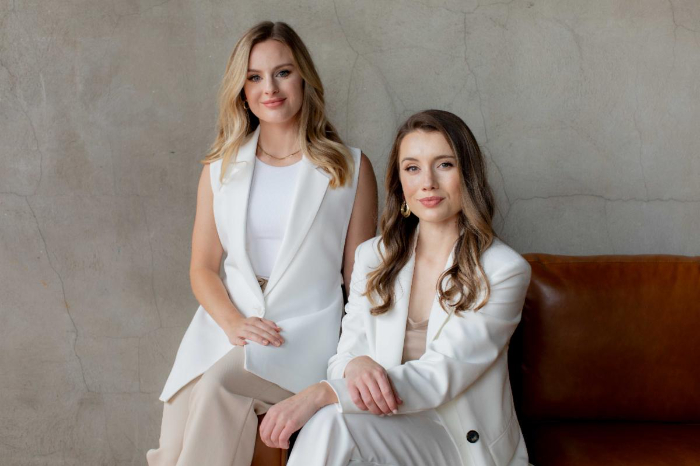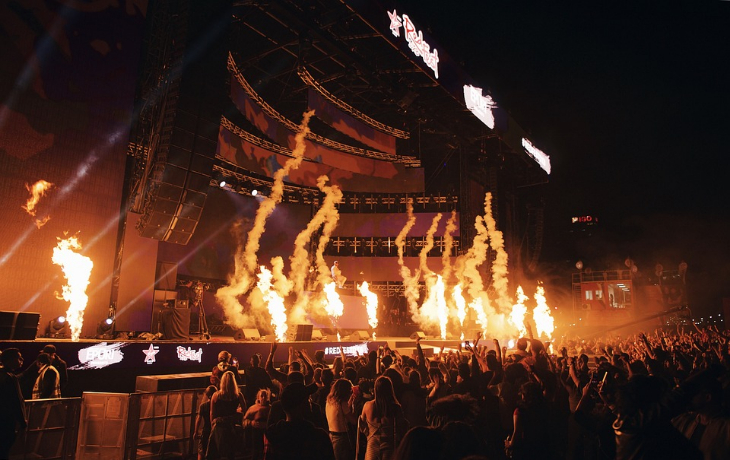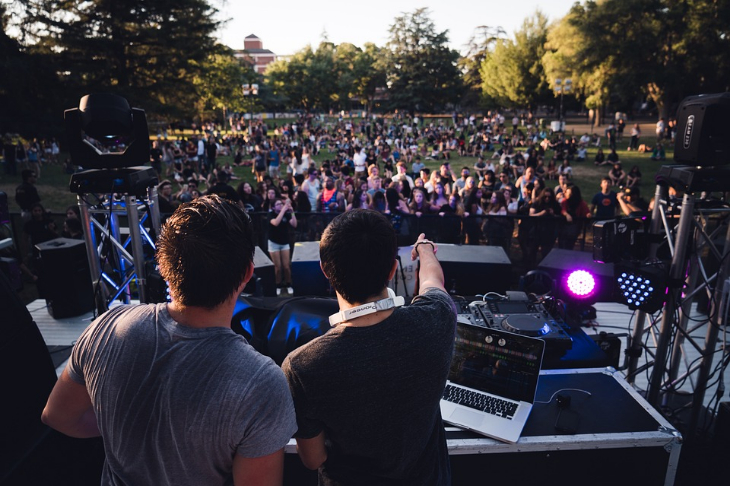Roblox Has Big Plans for Virtual Music Events
The gaming platform wants to make music a larger part of the experience

Music Tech category interest
Article Shared from TheVerge.com, originally written by Andrew Webster
On a Friday night in September, more than a million people showed up to an album launch party inside the virtual world of Roblox. American pop star Ava Max held a “virtual fan meetup” in the game to celebrate the launch of her new album Heaven andamp; Hell. It was a relatively simple affair. Max first appeared on a huge screen in front of a colorful dance floor floating in the sky, talking about her inspirations behind the album. Later, she performed a few songs while players ran around amid flashing lights, fireworks, and, eventually, a backdrop that transformed into a cartoonish vision of hell.
Despite its straightforward nature, 1.156 million unique players showed up for the event, with a peak concurrent total of 166,620 people — and it’s just the start of a plan to make music an integral part of Roblox. “The stretch goal is to go to the non-obvious places, where we can make the virtual experience even better than the real-world experience,” says Jon Vlassopulos, Roblox’s head of music.
The confluence of virtual spaces and music has been steadily growing for some time, but it’s really accelerated in 2020 due to the pandemic. With live, in-person events almost entirely canceled across the globe, artists have been searching for new ways to connect with fans. That could mean a skyscraper-sized cyborg version of Travis Scott stomping around Fortnite’s island or a ghostly CG-animated avatar of The Weeknd performing in TikTok. They’re events that have attracted millions of virtual attendees.
At first blush, Roblox doesn’t have the same cultural cache as the likes of Fortnite, TikTok, or Minecraft. It’s widely regarded as a kids platform, a popular place for young gamers to both build and play bite-sized games. But Vlassopulos says, while the audience does skew young, this perception isn’t entirely accurate. Roblox has been around since 2006, and he says the community has aged alongside it. “It’s not a kids thing,” Vlassopulos explains. “It’s a youth platform.” This youthful audience, combined with Roblox’s sheer scale — it has an estimated 150 million players — has turned it into an attractive space for artists.
Things have started slowly. Prior to the Ava Max event, Roblox also served as a broadcast partner for the One World: Together at Home benefit concert. One of the goals, according to Vlassopulos, was to “have an easy way to do something creative in a relatively light touch way, so it doesn’t take months and months to get done.” Both of these events came together relatively quickly and are almost like teasers, a way to show artists and labels the possibilities of the platform. But the Roblox team also has much more ambitious plans, which we’ll likely start to see come to fruition next year.
While many games and platforms have tried experimental virtual experiences, Roblox’s vision sounds more in line with traditional concerts. “Concerts, if we do them in the future, would be more high fidelity,” says Vlassopulos. “Our notion of a virtual concert we think has to have a virtual artist, a virtual stage, a virtual audience.” He also notes that this could include backstage elements for fans and that virtual festivals inside Roblox are a possibility.
Roblox is still relatively behind in the space. Fortnite, for instance, held its first virtual concert in 2019 and recently built a high-tech studio in Los Angeles so that it could hold more regular music events inside the game. The developer even partnered with K-pop supergroup BTS to debut a music video in Fortnite. Roblox’s efforts have been comparatively small-scale — but that’s by design. Vlassopulos says the plan is to slowly scale up, in order to “let the kids get used to it,” and steadily turn live music into a more prominent part of the Roblox experience.
“We’re just getting started,” he says, “but it’s pretty exciting to see where it all goes.”
More Photos
More from Music Tech

Music Tech
EVA, Tech Company Connecting Corporate Bookers to Local Performers, Launches in NYC
Eighth and largest market to date for EVA, NYC launches ahead of LA in early 2025

Music Tech
Hit-Boy Partners with Romplur to Transform Beatmakers into Software Entrepreneurs, Creating New Revenue Streams for Music Creators Worldwide
Grammy-Winning Producer Hit-Boy Launches Signature VST Plugin Suite and Contest for Creatives

Music Tech
Endel and Universal Music Group to Create AI-Powered, Artist-Driven Functional Music, Designed to Support Listener Wellness
Functional music represents one of the largest sub-categories of music listening worldwide

Music Tech
SoundCloud and Merlin Announce Global Licensing Deal to Bring Fan-Powered Royalties (FPR) to Merlin Members and Their Artists
The FPR model makes streaming royalties more equitable, helps artists benefit directly from their fans, and opens the door for more meaningful fan-to-artist connection.

Music Tech
Downtown Music Holdings To Acquire Digital Marketing Platform Found.ee
Acquisition Expands Downtown’s Existing Promotional and Marketing Capabilities for Artists and Labels with Tools to Build, Target and Optimize Digital Advertising and Marketing Campaigns

Music Tech
Too Lost Gives Independent Musicians a New Option for Distributing and Marketing Their Music
Too Lost, a music distribution and publishing company, is opening the doors for independent artists everywhere





 Newsletter Signup
Newsletter Signup